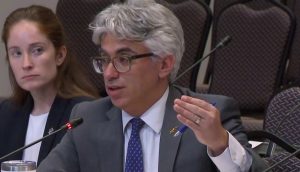
Media Technology Monitor (MTM) has released its latest report, which aims to explore the use of media by Canada’s Indigenous people, who are younger than the rest of the country’s population.
According to the research, Indigenous people have a median age of 29, while the rest of the Canadian population has a median age of 41. The report also found that Indigenous communities are also more likely (32% vs. 20% of the general population) to have children ages 0 to 17 living in the family home.
The report contains 1,379 telephone and online surveys with First Nations, Métis and Inuit Indigenous people conducted in fall 2022 and spring 2023.
TV
The surveys found that 75% of Indigenous people watch linear TV on a weekly basis, and the types of TV services available in their households differ by region. While cable services are common in Quebec, Manitoba, and Saskatchewan, fiber optic services are prevalent in Alberta. For its part, satellite TV is more popular among northern areas than the rest of Canada.
Around 84% of Indigenous people have a Connected TV set, and 61% are pay TV subscribers, according to the report. Indigenous people in the east and north are more likely to subscribe to pay TV (75%), as are the rest of Canadians (70%). SVOD and AVOD services are also popular among Indigenous homes – around 85% of respondents said they use SVOD platforms, while 87% choose AVOD.
Although many Indigenous people have an Internet connection at home (98%), 84% in the north said their ability to access content is usually affected by the quality of the Internet.
Radio
Indigenous people rely on both online audio (83%) and terrestrial radio (73%) as a source of information. Respondents in the Atlantic (87%) and northern (80%) areas are most likely to consume terrestrial radio. Those in British Columbia (93%), and those in Alberta, Ontario and Quebec (83%) prefer to listen to audio online.
Particularly, online AM/FM usage varies slightly by region (British Columbia 32%, Alberta 28%, Manitoba and Saskatchewan 30%, Ontario 35%, and Quebec 29%), according to the report. On the podcast front, British Columbia (46%) has the highest rate of consumption, followed by Alberta (39%) and Ontario (36%). Indigenous people in British Columbia (83%) are also more likely to subscribe to streaming music services, including YouTube and Spotify.
Social networks and news
The report found that Indigenous people are more likely than the rest of Canadians to use social networks: 86% vs. 75%, respectively.
Facebook (84%) is the most popular social network among Indigenous households, but its usage is slightly lower than that of the average Canadian (87%). The social network is followed by Instagram (55% for Indigenous people versus 53% of average Canadians), TikTok (39% vs. 28%) and Snapchat (35% vs. 21%).
News consumption is also popular among the respondents. Seventy-one percent do so online, while 48% watch a program online and 47% tune into a Canadian news channel. Indigenous people in the Atlantic consume the most news overall, either on TV (61%) or online (87%).
News websites are used more as a source of content than social networks for Indigenous people. But this is not the case in the north, where half of them turn to social networks to find them.
Photo via Unsplash























